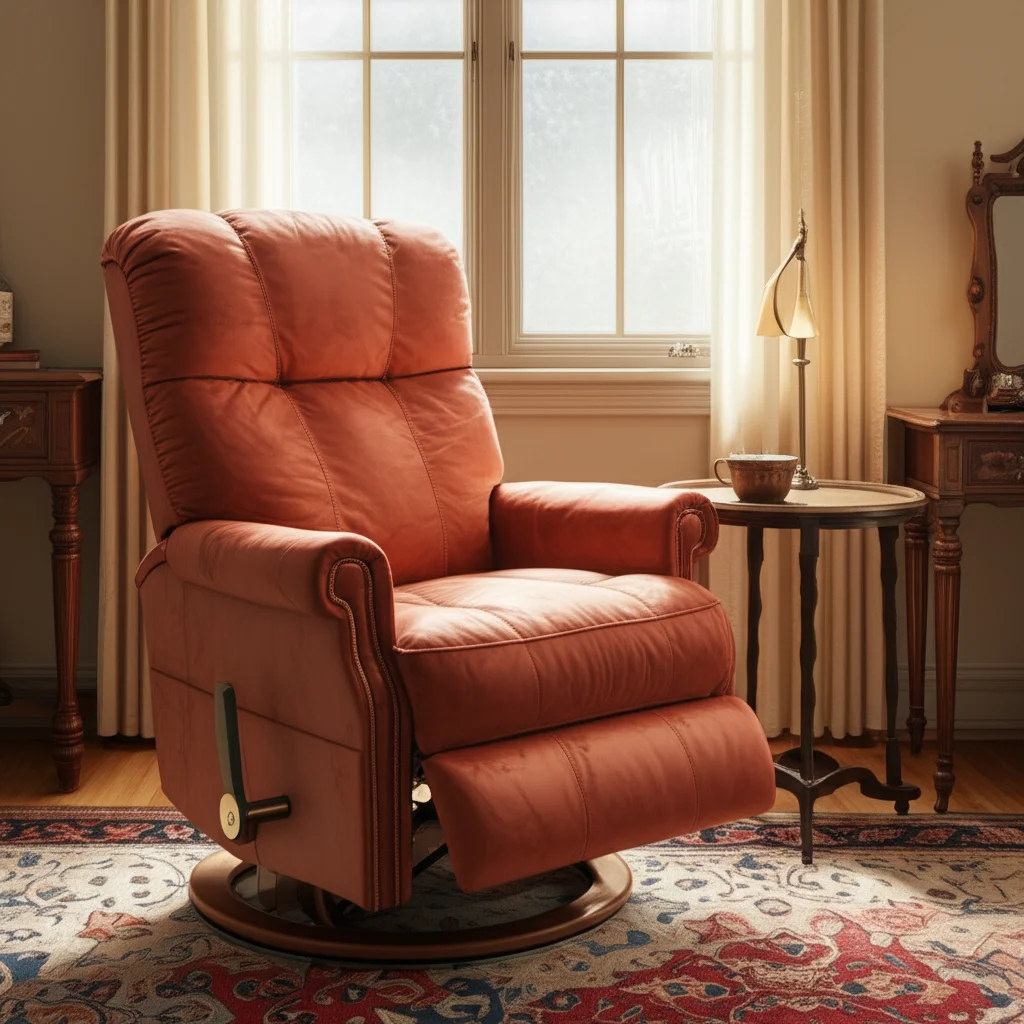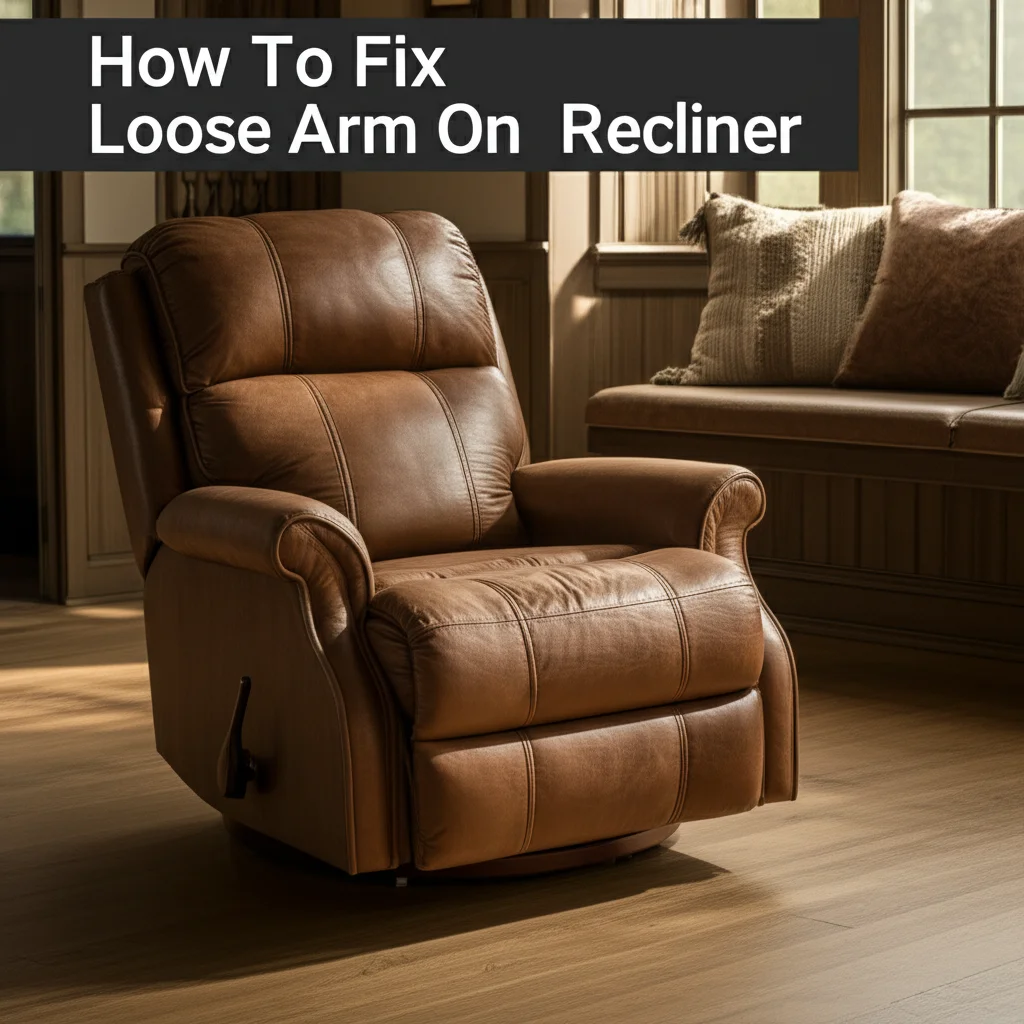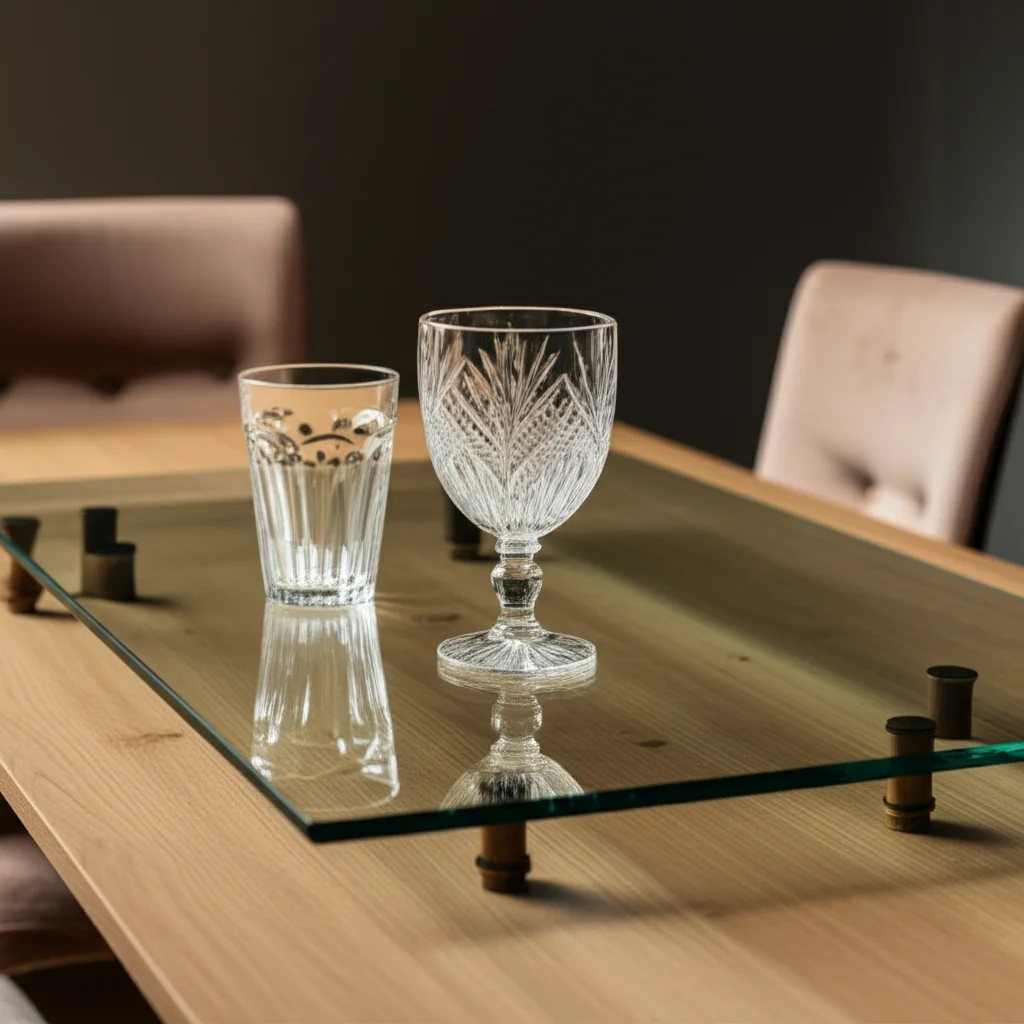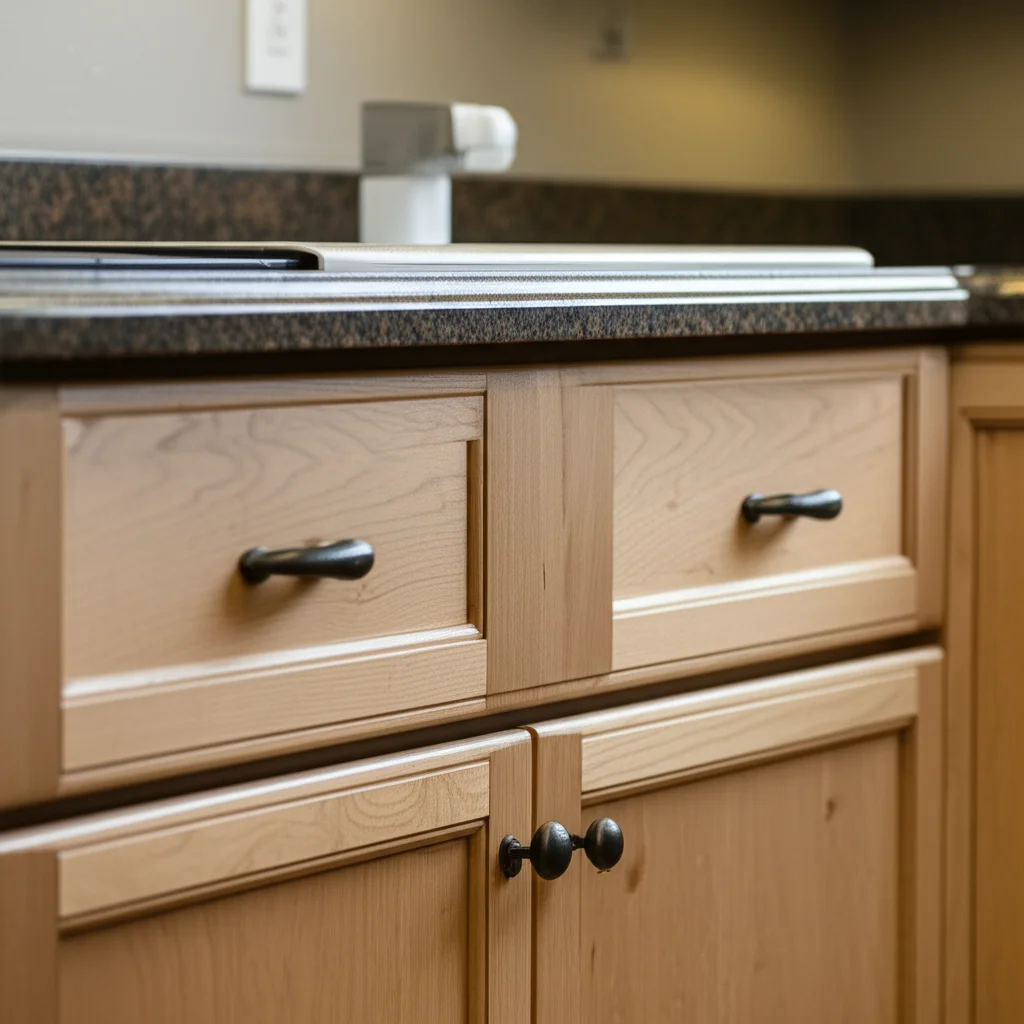· Todd Martin · Home Repair · 17 min read
How To Measure Recliner Springs

Measure Recliner Springs: Your Ultimate DIY Guide
Is your favorite recliner losing its cozy bounce? Perhaps it sags when you sit down, or the footrest feels less responsive. These issues often point to worn-out or broken springs. Fixing them yourself can save you money and bring back the comfort you love. I know the frustration of a broken chair, so I want to help you tackle this common repair.
This guide helps you understand how to measure recliner springs. We will look at different spring types. We will also cover the tools you need. Then, I will provide clear steps for accurate measurement. By the end, you will know how to get the right replacement springs and restore your recliner.
Takeaway:
- Identify your recliner’s spring type before measuring.
- Use precise tools like a tape measure and calipers for accuracy.
- Measure wire diameter, coil diameter, free length, and number of coils for coil springs.
- For zig-zag springs, measure overall length and wire gauge.
- Document all measurements carefully for buying replacements.
To measure recliner springs, first identify the spring type (coil, zig-zag, or torsion). Then, use a tape measure and calipers to get precise dimensions. For coil springs, measure wire diameter, coil diameter, and free length. For zig-zag springs, measure the overall length and wire gauge. Accurate measurements ensure a proper replacement fit.
Understanding Recliner Spring Types
Recliner chairs use various spring types to provide support and movement. Each type has specific roles. Knowing these types helps you measure them correctly. We need to identify the spring before we start measuring.
Coil Springs
Coil springs are very common in furniture. They look like a helix or a spiral. Some coil springs stretch when pulled; these are extension springs. Others compress when pushed; these are compression springs. Recliner mechanisms often use smaller compression or extension springs. They help the footrest or back operate smoothly. The seat itself might also use larger coil springs for bounce. If your recliner feels bouncy but sags, a coil spring might be failing.
Zig-Zag (Sinuous) Springs
Zig-zag springs, also called sinuous springs, are found in many recliner seats. They look like a long, wavy wire. These springs run from the front to the back of the seat frame. Clips hold them in place. They provide broad support across the seating area. If your recliner seat sags broadly rather than in one spot, zig-zag springs are likely the cause. These are different from smaller springs in the mechanism. Understanding how to fix springs in a chair often involves these types.
Torsion Springs
Torsion springs work by twisting. They store rotational energy. You might find them in the recliner’s mechanism. They help the footrest snap back into place or assist with reclining movement. They often have straight ‘legs’ extending from coiled body. When you operate the recliner, these legs twist the spring. This twisting action helps parts move. If your footrest does not retract well, a torsion spring could be weak.
Essential Tools and Safety Precautions
Before you begin measuring recliner springs, gather the right tools. Safety is also very important. Taking a few minutes to prepare will make the job easier and safer. I always make sure I have everything ready before starting any repair.
Tools You Will Need
- Tape Measure: A standard retractable tape measure is essential. You will use it for overall lengths.
- Digital Calipers: These are crucial for precise measurements. They help you measure wire diameter accurately. Wire diameter is often very small, so calipers are better than a ruler.
- Marker or Pen: To label parts or mark measurements.
- Notebook or Paper: For writing down all your measurements. A simple sketch can also help.
- Camera: Take photos of the spring’s original position. This helps during reassembly.
- Flathead Screwdriver/Pliers: For prying springs or removing clips if necessary.
- Gloves: Protect your hands from sharp edges or dirt.
- Safety Glasses: Springs can snap or parts can fly. Eye protection is a must.
Safety Precautions
Working on a recliner can be tricky. It often involves heavy parts and spring tension. Always prioritize your safety.
- Unplug Power Recliners: If your recliner is electric, unplug it from the wall outlet. This prevents accidental activation.
- Clear Your Workspace: Make sure you have enough room to work around the recliner. Remove any tripping hazards.
- Get Help Lifting: Recliners are heavy. Ask for assistance when flipping it over. This prevents back strain.
- Secure the Recliner: Once flipped, ensure the recliner is stable. You do not want it rocking or tipping while you work. Use sturdy blocks or supports if needed.
- Wear Personal Protective Equipment (PPE): Always wear safety glasses. Springs under tension can release suddenly. Gloves protect your hands from pinches and cuts.
- Understand Spring Tension: Springs store energy. When removing them, be aware they can release suddenly. Use caution when unhooking them. Never put your face directly over a spring you are removing.
Preparing Your Recliner for Spring Measurement
Preparing your recliner properly is a key step. It ensures easy access to the springs. This also makes your measurements accurate. I always take time for proper preparation.
Accessing the Springs
First, you need to gain access to the underside of your recliner. This is where most springs are located.
- Empty the Recliner: Remove any cushions or items from the chair.
- Flip the Recliner: Carefully tip the recliner onto its front or back. This exposes the bottom. Most recliners have a wooden or metal frame on the bottom. Get help if the chair is heavy. You can learn more about how to measure a recliner for overall dimensions, which can also help with handling.
- Remove Dust Cover (if present): Many recliners have a thin fabric dust cover stapled to the bottom. Carefully pull out the staples or cut the fabric to expose the internal mechanism and springs. Keep the fabric if you plan to reattach it later.
- Identify the Damaged Springs: Look for springs that are broken, stretched, or detached. Sometimes, a spring might look fine but has lost its tension. Press on different areas of the seat or mechanism to pinpoint weak spots. If you suspect the chair back is affected, sometimes you need to get into the back, which might involve similar steps as when learning how to fix a recliner chair back.
Documenting the Existing Setup
Before you remove any springs, document everything. This helps with reassembly.
- Take Photos: Use your phone to take multiple clear photos. Capture the springs from different angles. Show how they connect to the frame and mechanism. Focus on both the broken spring and any intact ones nearby.
- Sketch a Diagram: A simple hand-drawn diagram can be very helpful. Mark the location of each spring. Note where the broken spring was. Include any labels or numbers you see on the springs or mechanism.
- Note Spring Orientation: Pay attention to how each spring is oriented. For coil springs, note if the hooks face a certain direction. For torsion springs, note the angle of the legs. This is crucial for proper function.
Step-by-Step Guide to Measuring Coil Springs
Coil springs are crucial for your recliner’s comfort. Accurate measurement ensures you get the right replacement. I will walk you through the key dimensions to measure for these springs. This is a precise process.
Key Measurements for Coil Springs
You need to measure several specific dimensions for coil springs. These numbers define the spring’s properties.
- Wire Diameter: This is the thickness of the metal wire itself. Use your digital calipers for this. Measure several points along the wire to ensure accuracy. It is often a small measurement, like 0.08 inches or 2mm. Precision here is key.
- Outside Diameter (OD) of the Coil: Measure the overall width of the coiled part of the spring. Place the calipers around the outside of the coil. Do not include any hooks or loops in this measurement.
- Free Length (Uncompressed/Unstretched): This is the length of the spring when it is not under any load.
- For Extension Springs: If the spring is broken, measure an intact identical spring if possible. If not, try to piece the broken one together to estimate its original length. Measure from the inside edge of one hook to the inside edge of the other hook.
- For Compression Springs: Measure the total length of the spring from end to end when it is resting freely.
- Number of Coils: Count the total number of full coils in the spring. This includes the coils that form the ends or hooks. Count carefully to avoid mistakes.
- Hook/Loop Configuration (for Extension Springs): Observe the type of hooks or loops on the ends. Are they open hooks? Closed loops? Do they extend straight or are they offset? Note the length and shape of these extensions. These details affect how the spring attaches.
Tips for Accurate Measurement
- Remove the Spring: It is best to remove the broken or failing spring from the recliner for accurate measurement. This allows you to handle it freely.
- Use Calipers for Wire Diameter: A tape measure will not be accurate enough for wire diameter. Digital calipers provide the precision needed for this small measurement.
- Measure Multiple Times: Measure each dimension two or three times. This helps catch any errors. Take the average if there are slight differences.
- Be Specific: When writing down measurements, include the units (e.g., “0.100 inch wire diameter,” “5 inch free length”).
- Note Spring Tension: While not a physical measurement, observe the spring’s tension. Does it feel very stiff or easily compressed/stretched? This helps when describing it to a supplier. This type of detail is helpful when you are working on how to fix sagging recliner seat issues.
Measuring Zig-Zag (Sinuous) Springs
Zig-zag springs are common in recliner seats. They provide widespread support. Measuring them is different from measuring coil springs. These measurements are simple but crucial.
Key Measurements for Zig-Zag Springs
When measuring zig-zag springs, focus on these main characteristics:
- Overall Length: Measure the length of the zig-zag spring from one end to the other. Measure it in its relaxed state, not stretched. This is the length of the spring as it would sit on the frame.
- Wire Gauge (Thickness): Use your digital calipers to measure the thickness of the metal wire. Just like with coil springs, this needs to be precise. Standard gauges are often 9 gauge or 11 gauge.
- Arc Height (Rise): This is the height of the curve of the zig-zag from its base. Lay the spring flat on a surface. Measure from the surface to the highest point of one of its arcs. This determines how much bounce the spring provides.
- Number of “Zigs” or Waves: Count the number of complete “zig-zag” sections along the spring’s length. This helps identify the spring’s design.
- Attachment Type: Note how the spring attaches to the frame. Is it with clips, coils, or another method? Take photos of the attachment points. These are often metal clips that snap onto the frame.
Important Considerations
- Broken vs. Intact: If your zig-zag spring is broken, try to measure an identical intact spring from the same chair. If no intact spring exists, carefully piece together the broken one. Try to get its original length.
- Spring Clips: Remember that the clips holding the spring might also need replacement. These are usually small metal loops. They screw into the frame. Note their type and condition.
- Sagging Prevention: Sometimes, sagging is not just from a broken spring. It can be from stretched springs. Measure an old, stretched spring against a new one if you have it. This will show the difference. When learning how to fix springs in a chair, zig-zag springs are a common target. These simple steps help ensure comfort.
Measuring Torsion Springs and Other Less Common Types
While coil and zig-zag springs are most common, recliners can use other spring types. Torsion springs are often found in mechanisms. Occasionally, flat or serpentine springs might appear. Measuring these requires specific attention to their unique designs.
Measuring Torsion Springs
Torsion springs are designed to exert rotational force. They are often found in the reclining mechanism, such as for the footrest or the main pivot points.
- Wire Diameter: As with other springs, use digital calipers to measure the thickness of the wire. This is a fundamental measurement for all spring types.
- Inside Diameter (ID) or Outside Diameter (OD) of the Coil Body: Measure the diameter of the coiled section. Either inside or outside diameter is usually sufficient, but be consistent and note which one you measure.
- Body Length: This is the length of the coiled section along its axis.
- Leg Lengths: Torsion springs have straight ‘legs’ extending from the coil. Measure the length of each leg from the end of the coil to the tip of the leg.
- Leg Angle/Orientation: This is critical for torsion springs. Note the angle of the legs relative to each other. Often, they are at 90, 180, or 270 degrees from each other. Draw a diagram showing this. This ensures the new spring fits and functions correctly within the mechanism.
- Coil Direction (Left or Right Hand): Look at the coils. Do they go clockwise (right-hand wound) or counter-clockwise (left-hand wound) when moving away from you? This affects the direction of torque.
- Number of Coils: Count the full coils in the spring’s body.
These springs are vital for the smooth operation of parts. If you are having trouble with the recliner footrest, it is possible you need to measure these, and then potentially proceed with how to fix a recliner footrest after getting the correct part.
Other Less Common Spring Types
Occasionally, you might encounter other spring variations:
- Flat Springs: These are flat pieces of metal shaped to provide spring action. They are not coiled. You would measure their length, width, and thickness. Note their specific bends or curves.
- Serpentine Springs: These are similar to zig-zag springs but often have a tighter, more varied wave pattern. Measure their overall length, wire gauge, and the height of their waves. Note their attachment points.
When encountering any unusual spring, the key is to document its dimensions thoroughly. Take photos from all angles. Draw detailed sketches. Include every bend, hook, or attachment point. This detailed information helps suppliers match the spring correctly.
Documenting Your Measurements and Finding Replacements
Measuring recliner springs is only half the battle. The next crucial step is documenting your findings. Then, you need to use this information to find the right replacement. Accurate documentation prevents costly mistakes.
Creating a Measurement Log
A clear log of your measurements is essential. Do not rely on memory. I always write everything down immediately.
Use a Table Format: A simple table helps organize data.
- Spring Type: (e.g., Coil Extension, Zig-Zag, Torsion)
- Location: (e.g., Footrest Mechanism, Seat, Back)
- Wire Diameter: (e.g., 0.105 inches or 2.67 mm)
- Outside Diameter (Coil): (e.g., 0.75 inches or 19 mm - for coil/torsion)
- Free Length: (e.g., 4.5 inches or 114 mm - for coil)
- Overall Length: (e.g., 20 inches or 508 mm - for zig-zag)
- Number of Coils/Waves: (e.g., 10 coils, 8 waves)
- Leg Lengths/Angles (for Torsion): (e.g., 2” & 3” at 180 degrees)
- Hook/End Type (for Coil): (e.g., Open loop, Closed end)
- Coil Direction (for Torsion): (e.g., Right-hand wound)
- Notes: (Any specific observations, color, finish, apparent tension)
Include Photos: Attach your photos to your notes. Label them clearly. Photos provide visual context that numbers alone cannot.
Take the Broken Spring with You: If possible, keep the broken spring. A physical sample is the best reference for a supplier.
Finding the Right Replacement Springs
With your detailed measurements in hand, you are ready to search for replacements. This step is about matching your old spring perfectly.
- Online Specialty Retailers: Many websites specialize in furniture repair parts. Search for “recliner springs,” “furniture springs,” or “upholstery springs.” You will often find categories for coil, zig-zag, and torsion springs. Provide your exact measurements to their customer service or use their filtering tools.
- Furniture Parts Suppliers: Look for companies that supply parts to furniture manufacturers or repair shops. These often have a wide inventory.
- Local Upholstery or Furniture Repair Shops: A local shop might have the spring you need in stock. Even if they do not, they can often order it. They might also offer advice or suggest a suitable alternative. If you are considering a bigger project, like how to reupholster a recliner chair, you will definitely be dealing with springs.
- Hardware Stores: For very generic coil springs, a well-stocked hardware store might have something. However, recliner springs are often specific.
- Manufacturer Specific Parts: If you know the make and model of your recliner, you might be able to contact the manufacturer. They might sell replacement parts directly or direct you to authorized distributors. This is often the best route for complex mechanism springs.
Importance of Precise Match
Using the wrong spring can lead to new problems.
- Incorrect Tension: A spring that is too stiff will make the recliner hard to operate. A spring that is too weak will not provide proper support.
- Wrong Size: A spring that is too long or too short will not fit. It might also bind or interfere with other parts.
- Improper Function: Torsion springs with the wrong leg angle or coil direction will not work as intended in the mechanism. This is particularly important when working on issues such as how to fix sagging recliner seat.
Always double-check your measurements before ordering. Do not hesitate to contact suppliers with questions. A good photo and precise measurements will greatly increase your chances of finding the perfect replacement spring.
FAQ Section
Why do recliner springs break or lose tension?
Recliner springs endure constant stress from sitting and reclining movements. Over time, the metal fatigues and can crack or stretch. Heavy use, excessive weight, or sudden impacts accelerate this wear. Rust can also weaken springs, leading to premature failure. Regular cleaning and care can extend spring life, but eventual replacement is common.
Can I replace just one spring in my recliner?
Often, yes, you can replace a single broken or weak spring. However, if multiple springs are showing signs of wear or are the same age, consider replacing them in pairs or sets. This ensures balanced support. Replacing just one might put extra strain on the older, weaker springs, causing them to fail soon after.
What if I cannot find an exact match for my recliner spring?
If an exact match is unavailable, look for springs with very close measurements. Prioritize wire diameter, free length, and coil diameter for coil springs. For zig-zag springs, match the length and gauge. Consult with a spring supplier or upholstery shop for advice. They might suggest a compatible alternative that works.
How do I remove old recliner springs safely?
Removing old springs needs caution due to stored tension. Use strong pliers or a spring removal tool for coiled springs. For zig-zag springs, you might need to pry clips open. Always wear safety glasses and gloves. Position your body away from the spring’s potential path if it slips. Work slowly and methodically.
Are all recliner springs the same?
No, recliner springs are not all the same. They come in various types (coil, zig-zag, torsion), sizes, wire gauges, and configurations. Each spring is designed for a specific purpose and location within the recliner. Incorrectly sized or tensioned springs will not fit or function properly. Accurate measurement is therefore very important.
How often should recliner springs be checked?
It is a good practice to inspect your recliner’s springs every 1-2 years, especially if it sees heavy use. Flip the chair over and visually check for rust, bends, or breaks. Test the seat for unusual sagging. Early detection of spring issues can prevent more significant damage to the recliner’s frame or mechanism.
Conclusion
You have now learned how to measure recliner springs. This knowledge empowers you to tackle common furniture problems. You understand the different types of springs and the specific measurements each requires. We covered the necessary tools and the vital safety steps. With precise data, you can find the perfect replacement.
Fixing a sagging seat or a finicky footrest brings back the joy of your recliner. It also saves you money on professional repairs. Your home essentials should always be comfortable and functional. So, grab your tools, get measuring, and bring that beloved recliner back to its full glory. Get started on your recliner repair project today!





